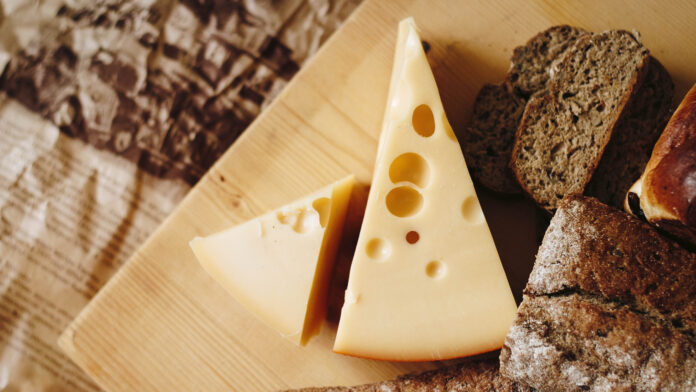Certain types of cheese can take over a year to age enough to be ready to eat, and that time drives up the cost. As the cost of groceries continues to soar, is there a way to produce tastier cheeses faster and unlock lower price points?
Shangyi Xu, PhD student in molecular biology at the University of Saskatchewan, is using protein engineering to find ways to make this delicious idea possible.
Cheese making starts with a tasteless curd made from raw milk, and as the curd ages into a specific cheese, many biochemical reactions take place to produce a characteristic flavour and texture. Carbohydrates, fats, and proteins need to break down for this to happen, and all of it is thanks to enzymes that speed up the process. Cheese makers can help this process along by adding specific microbes or free enzymes as part of their recipe.
However, as some enzymes work, they produce bitter-tasting products early on that are further broken down over time. Cutting down on aging time without addressing this hurdle would lead to bitter cheeses that might not win over potential consumers.
Xu zeroed in on an enzyme called prolidase that breaks down bitter compounds in young cheese, and is naturally produced by lactic acid bacteria that are commonly used in cheese making. He wanted to know if there was a way to modify prolidase to help it work faster, so he brought the question to Canadian Light Source — home of Canada’s only synchrotron — to learn more about its structure.
Synchrotron light is more powerful than what is used in laboratory-based instruments, allowing researchers to get higher resolution maps of how molecular structures are oriented in space, and even how molecules interact with each other. That’s how Xu found that he could engineer a new sequence of amino acids in a key loop structure in prolidase to accelerate the cheese aging process.
This shortcut to tastier cheese also points to a greater potential to use these techniques in the food and health sciences, for any process where enzymes are important.
From farm to table, a lot of things have to happen to transform raw milk into cheese. This research illuminates how it is possible to achieve the same quality in less time, all while providing food for thought in the field of protein engineering.








































